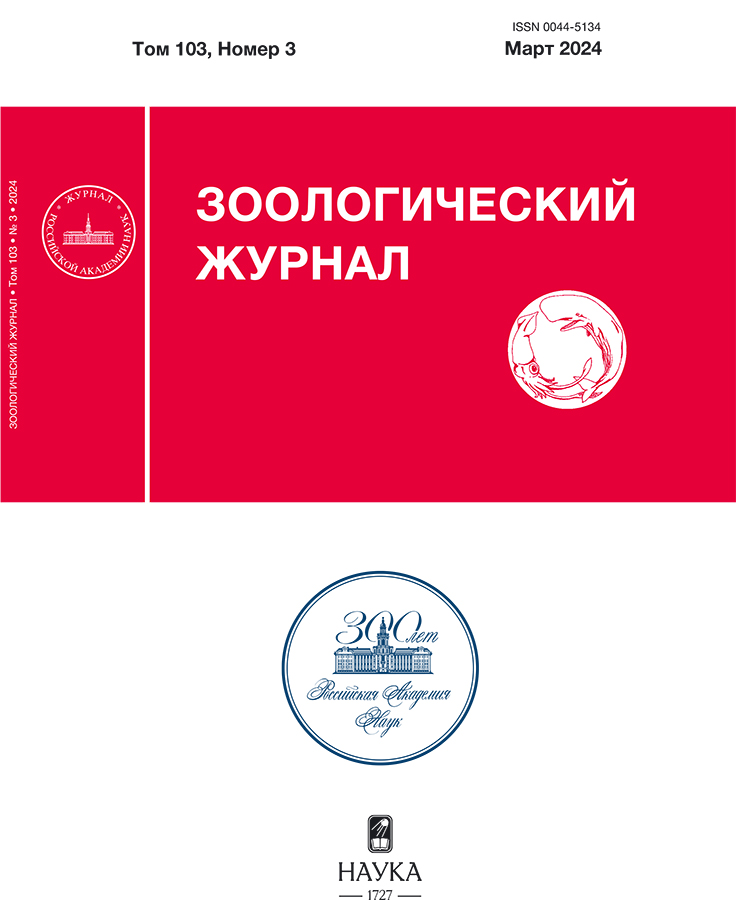First record of Zoantharia in the Black Sea: Isozoanthus cf. sulcatus reared from planulae
- Авторлар: Simakova U.V.1, Prudkovsky A.A.2, Lebedeva T.S.2, Smorygo A.E.3, Moskalenko V.N.1, Molodtsova T.N.1
-
Мекемелер:
- Shirshov Institute of Oceanology, Russian Academy of Sciences
- Lomonosov Moscow State University
- Université libre de Bruxelles
- Шығарылым: Том 103, № 3 (2024)
- Беттер: 15-19
- Бөлім: ARTICLES
- URL: https://jdigitaldiagnostics.com/0044-5134/article/view/654302
- DOI: https://doi.org/10.31857/S0044513424030029
- EDN: https://elibrary.ru/VNYUSA
- ID: 654302
Дәйексөз келтіру
Аннотация
The first record of a species from the order Zoantharia in the Black Sea is given. Zoantharians were successfully reared from planktonic larvae collected in a single planktonic net haul conducted in shallow coastal waters of the Golubaya Bay, Gelendzhik area, Caucasus. The larvae were subsequently settled in a small glass container and resulting colonies were maintained in an aquarium with a salinity level of 18 psu for approximately nine months, but in June 2018 all colonies died due to uncontrolled bloom of filamentous algae. The presence of symbiotic algae of the family Symbiodiniacea in tissues of colonies is shown. Phylogenetic analysis using mitochondrial (COI) markers revealed a high degree of similarity between the Black Sea zoantharian and Isozoanthus sulcatus (Gosse 1860) from European seas.
Негізгі сөздер
Толық мәтін
Авторлар туралы
Ulyana Simakova
Shirshov Institute of Oceanology, Russian Academy of Sciences
Email: tina@ocean.ru
Ресей, 36 Nakhimovsky prospekt, Moscow, 117218
Andrey Prudkovsky
Lomonosov Moscow State University
Email: tina@ocean.ru
Invertebrate Zoology Department
Ресей, Leninskie Gory 1–12, Moscow, 119234Tatiana Lebedeva
Lomonosov Moscow State University
Email: tina@ocean.ru
Embryology Department
Ресей, Leninskie Gory 1–12, Moscow, 119234Alexandra Smorygo
Université libre de Bruxelles
Email: tina@ocean.ru
Бельгия, Avenue Franklin Roosevelt 50, 1050, Bruxelles
Viktoria Moskalenko
Shirshov Institute of Oceanology, Russian Academy of Sciences
Email: tina@ocean.ru
Ресей, 36 Nakhimovsky prospekt, Moscow, 117218
Tina Molodtsova
Shirshov Institute of Oceanology, Russian Academy of Sciences
Хат алмасуға жауапты Автор.
Email: tina@ocean.ru
Ресей, 36 Nakhimovsky prospekt, Moscow, 117218
Әдебиет тізімі
- Benson D.A., Cavanaugh M., Clark K., Karsch-Mizrachi I., Lipman D.J., Ostell J., Sayers E.W., 2012. GenBank // Nucleic acids research. V. 41. № D1. Р. D36–D42.
- Carlgren O., 1913. Zoantharia // The Danish Ingolf-Expedition. T. 5. P. 4.
- Cinar M.E., Yokeş M.B., Açik Ş., Bakir A.K., 2014. Checklist of Cnidaria and Ctenophora from the coasts of Turkey // Turkish Journal of Zoology. V. 38. № 6. Р. 677–697.
- Fujii T., Reimer J.D., 2013. A new family of diminutive zooxanthellate zoanthids (Hexacorallia: Zoantharia) // Zoological Journal of the Linnean Society. V. 169. № 3. P. 509–522.
- Geller J., Meyer C., Parker M., Hawk H., 2013. Redesign of PCR primers for mitochondrial cytochrome c oxidase subunit I for marine invertebrates and application in all‐taxa biotic surveys // Molecular Ecology Resources. V. 13. № 5. P. 851–861.
- Guindon S., Dufayard J.-F., Lefort V., Anisimova M., Hor- dijk W., Gascuel O., 2010. New algorithms and methods to estimate maximum-likelihood phylogenies: assessing the performance of PhyML 3.0 // Systematic Biology. V. 59. № 3. P. 307–321.
- Hoang D.T., Chernomor O., Von Haeseler A., Minh B.Q., Vinh L.S., 2018. UFBoot2: improving the ultrafast bootstrap approximation // Molecular Biology and Evolution. V. 35. № 2. P. 518–522.
- Kalyaanamoorthy S., Minh B.Q., Wong T.K., Von Haeseler A., Jermiin L.S., 2017. ModelFinder: fast model selection for accurate phylogenetic estimates // Nature Methods. V. 14. № 6. P. 587–589.
- Katoh K., Standley D.M., 2013. MAFFT multiple sequence alignment software version 7: improvements in performance and usability // Molecular Biology and Evolution. V. 30. № 4. P. 772–780.
- Letunic I., Bork P., 2021. Interactive Tree of Life (iTOL) v5: an online tool for phylogenetic tree display and annotation // Nucleic Acids Research. V. 49. № W1. P. W293–W296.
- Low M.E., Sinniger F., Reimer J.D., 2016. The order Zoantharia Rafinesque, 1815 (Cnidaria, Anthozoa: Hexacorallia): supraspecific classification and nomenclature // ZooKeys. № 641. P. 1–80.
- Manning M.M., Gates R.D., 2008., Diversity in populations of free‐living Symbiodinium from a Caribbean and Pacific reef // Limnology and Oceanography. V. 53. № 5. P. 1853–1861.
- Nguyen L.-T., Schmidt H.A., Von Haeseler A., Minh B.Q., 2015. IQ-TREE: a fast and effective stochastic algorithm for estimating maximum-likelihood phylogenies // Molecular Biology and Evolution. V. 32. № 1. P. 268–274.
- Previati M., Palma M., Bavestrello G., Falugi C., Cerrano C., 2010. Reproductive biology of Parazoanthus axinellae (Schmidt, 1862) and Savalia savaglia (Bertoloni, 1819) (Cnidaria, Zoantharia) from the NW Mediterranean coast // Marine Ecology. V. 31. № 4. P. 555–565.
- Reimer J.D., Kise H., Albinsky D., Uyeno D., Matsuoka M., 2017. Nanozoanthus (Cnidaria: Anthozoa: Hexacorallia: Zoantharia: Nanozoanthidae) outside of tropical and subtropical waters // Marine Biodiversity. V. 47. P. 965–969.
- Ryland J.S., 1997. Reproduction in Zoanthidea (Anthozoa: Hexacorallia) // Invertebrate Reproduction & Development. V. 31. № 1–3. P. 177–188.
- Sinniger F., Reimer J.D., Pawlowski J., 2008. Potential of DNA sequences to identify zoanthids (Cnida- ria: Zoantharia) // Zoological Science. V. 25. № 12. P. 1253–1260.
- Williams R.A., 2000. Redescription of the zoanthid Isozoanthus sulcatus (Gosse, 1859), with notes on its nomenclature, systematics, behaviour, habitat and geographical distribution // Ophelia. V. 52. № 3. P. 193– 206.
Қосымша файлдар











